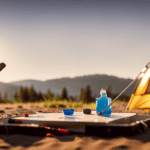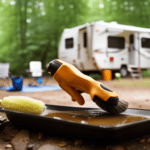Beginners Guides
How To Clean Mould Off Camper Trailer Canvas

Are you prepared to set out and begin an adventure in your camper trailer? Before you head out, it’s essential to check that your canvas is clean and mold-free. Mold can damage the look of your camper trailer and also present health hazards to you and your loved ones.
But fear not, because I’ve got you covered with a step-by-step guide on how to clean mould off camper trailer canvas. From assessing the extent of the mould infestation to applying a waterproofing treatment, I’ll walk you through each and every detail to ensure that your canvas is spotless and ready for your next journey.
So let’s get started and get that mould out of your way, so you can enjoy your camper trailer to the fullest!
Key Takeaways
- Cleaning mould off camper trailer canvas is important for maintaining its condition and preventing potential health risks.
- The process involves assessing the extent of mould infestation, gathering necessary cleaning supplies, and mixing a vinegar and water solution to break down mould spores.
- Thoroughly scrubbing the affected areas with the solution and rinsing the canvas with clean water are crucial steps.
- Allowing the canvas to air dry completely and applying a waterproofing treatment can help prevent future mould growth.
Assess the Extent of the Mould Infestation
Take a close look at the camper trailer canvas to see just how much mould has invaded. Assessing the extent of the mould infestation is crucial in determining the appropriate cleaning method.
Not only is it important for maintaining the appearance of the canvas, but also for assessing any potential health risks associated with mould. Mould can cause respiratory issues and allergies, so it’s essential to take this step seriously.
Start by inspecting the surface of the canvas thoroughly. Look for visible signs of mould, such as black or green patches. Pay attention to any musty odor, as it can indicate a more significant mould problem. Additionally, check for any discoloration or staining on the canvas.
To prevent future mould growth, it’s important to identify the source of moisture. Inspect the camper trailer for any leaks or areas where water can enter. Fixing these issues can help prevent mould from returning after cleaning.
Now that you’ve assessed the extent of the mould infestation and identified potential health risks and sources of moisture, it’s time to gather the necessary cleaning supplies.
Gather the Necessary Cleaning Supplies
Make sure you’ve got all the essential tools at your disposal before tackling the task of banishing that pesky fungi from your camper’s fabric. Choosing the right cleaning supplies is crucial to effectively remove mold from your trailer canvas. Start by gathering a soft brush or sponge, mild detergent, vinegar, water, and a bucket. These supplies will help you tackle the mold without causing any damage to the fabric.
To begin the cleaning process, mix a solution of one part vinegar to three parts water in the bucket. Vinegar is a natural mold killer and will help break down the mold spores. Dip the brush or sponge into the solution and gently scrub the affected areas. Be sure to cover all the mold-infested spots thoroughly. Pay extra attention to seams and corners where mold tends to accumulate.
Proper cleaning techniques are essential to ensure the mold is completely eradicated. After scrubbing the canvas, rinse it thoroughly with clean water to remove any remaining vinegar solution. This step is crucial as leaving vinegar on the fabric can cause discoloration. Once rinsed, allow the canvas to air dry completely before moving on to the next step.
Now that we’ve gathered our cleaning supplies and properly scrubbed the mold-infested areas, it’s time to remove loose debris and dust from the canvas.
Remove Loose Debris and Dust from the Canvas
Once you’ve gathered all the necessary supplies, it’s time to ensure that any loose debris and dust are effectively removed from the fabric of your camper. Cleaning the canvas thoroughly is essential to prevent further mold growth and maintain the longevity of your camper. Here are some cleaning techniques and preventative measures you can take:
-
Start by using a soft-bristled brush or a broom to gently sweep away any loose debris, such as leaves, dirt, or twigs. Be careful not to apply too much pressure to avoid damaging the fabric.
-
Next, use a handheld vacuum cleaner with a brush attachment to remove any remaining dust from the canvas. Make sure to cover all areas, including corners and seams, to ensure a thorough cleaning.
-
For stubborn dirt or stains, you can use a mild detergent mixed with warm water. Dip a soft cloth or sponge into the solution and gently scrub the affected areas. Avoid using harsh chemicals or bleach, as they can damage the fabric.
-
Rinse the canvas with clean water using a hose or a spray bottle. Make sure to remove any soap residue thoroughly.
-
Finally, allow the canvas to air dry completely before proceeding to the next step.
By following these cleaning techniques and taking preventative measures, you can effectively remove loose debris and dust from your camper’s canvas. Once the canvas is clean, it’s time to move on to creating a cleaning solution to tackle the mold problem.
Create a Cleaning Solution
To easily tackle the mold problem on your camper’s fabric, mix up a cleaning solution that will leave your canvas looking fresh and smelling great. The cleaning process involves creating a solution using common household ingredients. Here is a simple recipe for an effective cleaning solution:
| Ingredient | Measurement | Purpose |
|---|---|---|
| Distilled white vinegar | 1 cup | Removes mold and mildew |
| Warm water | 2 cups | Dilutes the vinegar and aids in cleaning |
| Tea tree oil | 1 teaspoon | Acts as a natural disinfectant |
In a bucket or spray bottle, combine the vinegar, warm water, and tea tree oil. Mix well until the solution is thoroughly blended. The vinegar will help eliminate mold and mildew, while the tea tree oil will provide additional antibacterial properties. The warm water helps to dilute the vinegar and aids in the cleaning process.
Once you have your cleaning solution ready, you can move on to the next step and test it on a small area of your camper’s canvas to ensure it does not cause any damage. This will help you determine if the solution is safe to use on the entire surface of your camper trailer.
Test the Cleaning Solution on a Small Area
Before applying the solution, it’s crucial to see the incredible results and make sure it won’t harm the precious fabric. The best way to do this is by testing the cleaning solution’s effectiveness on a small area. Here’s how to test the solution before using it on the entire camper trailer canvas:
- Choose a small, inconspicuous area on the canvas to test the solution.nn2. Dilute the cleaning solution according to the instructions.nn3. Apply a small amount of the solution to the chosen area using a clean cloth or sponge.nn4. Gently scrub the area in circular motions to work the solution into the fabric.
After testing the solution, check for any discoloration or damage to the fabric. If the solution passes the test and effectively removes the mold without causing harm, you can proceed with confidence. However, if there are any negative effects, it’s important to consider alternative cleaning methods.
Now that we’ve ensured the safety and effectiveness of the cleaning solution, let’s move on to applying it to the moldy areas of the camper trailer canvas.
Apply the Cleaning Solution to the Mouldy Areas
Now that we’ve tested the cleaning solution and seen its incredible results, it’s time to banish the stubborn mold from the fabric with its powerful formula. Applying the cleaning solution is a crucial step in effectively cleaning the camper trailer canvas.
Start by pouring the solution into a spray bottle for easy application. Make sure to shake the bottle well to ensure the solution is properly mixed. Then, spray the cleaning solution onto the moldy areas of the canvas, ensuring complete coverage. The solution will work to break down the mold and remove any stains or discoloration.
When applying the cleaning solution, it’s important to use a thorough and methodical technique. Start from the top and work your way down, ensuring that each section is evenly coated. Use a gentle, circular motion to rub the solution into the fabric, paying extra attention to any particularly moldy spots. Allow the cleaning solution to sit on the canvas for a few minutes to allow it to penetrate and break down the mold.
To transition into the subsequent section about scrubbing the canvas gently with a soft brush, we can move on to the next step of the cleaning process.
Scrub the Canvas Gently with a Soft Brush
Once the cleaning solution has had time to penetrate the fabric and break down the mold, I gently scrub the canvas with a soft brush to remove any remaining traces. The soft brush is essential in this step as it helps to dislodge the mold without causing any damage to the canvas.
To give you a better understanding of how to scrub the canvas effectively, let me provide you with a table that outlines the process:
| Step | Action | Tips |
|---|---|---|
| 1 | Dip the soft brush into the cleaning solution | Make sure the brush is adequately soaked in the solution to maximize its cleaning power. |
| 2 | Apply gentle pressure and scrub in circular motions | Avoid using excessive force to prevent any tears or damage to the canvas. |
| 3 | Focus on the moldy areas | Concentrate your efforts on the parts of the canvas that are visibly affected by mold. |
| 4 | Rinse the brush regularly | Rinse the brush in clean water to remove any mold particles that may have accumulated. |
Once the canvas has been scrubbed thoroughly with the soft brush, it is time to move on to the next step: rinsing the canvas thoroughly. This will ensure that all traces of the cleaning solution and mold are completely removed.
Rinse the Canvas Thoroughly
To ensure a pristine and mold-free surface, it’s crucial for you to thoroughly rinse the canvas after scrubbing it with a soft brush. This step is an essential part of canvas maintenance and plays a vital role in preventing mold growth.
When rinsing the canvas, make sure to use a gentle stream of water. Start at the top and work your way down, ensuring that all the soap residue and loosened mold particles are completely washed away. Pay extra attention to the corners and seams, as these areas are prone to mold buildup.
To emphasize the importance of thorough rinsing, consider the following sub-lists:
-
Benefits of thorough rinsing:
- Removes any remaining soap residue that can attract mold spores.
- Ensures that all loosened mold particles are completely washed away.
-
Tips for effective rinsing:
- Use a gentle stream of water to avoid damaging the canvas.
- Start at the top and work your way down to ensure complete coverage.
- Pay extra attention to corners and seams, as mold tends to accumulate in these areas.
After rinsing, allow the canvas to dry completely. This will help prevent any residual moisture from promoting mold growth.
Moving on to the next step, which is allowing the canvas to dry completely, it’s important to follow a few guidelines to ensure optimal results.
Allow the Canvas to Dry Completely
Make sure you give the canvas ample time to dry completely, allowing the warm sun to gently penetrate the fabric and evaporate any lingering moisture. The drying process is crucial in preventing moisture from getting trapped in the canvas, as this can lead to the growth of mold and mildew. After rinsing the canvas thoroughly, it’s important to let it air dry in a well-ventilated area. Hang the canvas in a place where it can receive plenty of sunlight and fresh air. This will help to kill any remaining mold spores and prevent them from regrowing.
It’s recommended to leave the canvas outside for at least 24 hours, or until it feels completely dry to the touch. This will ensure that all moisture has evaporated from the fabric. After the canvas has dried completely, you can move on to the next step of applying a waterproofing treatment to prevent future mold growth.
Apply a Waterproofing Treatment to Prevent Future Mould Growth
Ensure your canvas stays protected by applying a waterproofing treatment that will effectively prevent any future mold growth. Waterproofing techniques are essential for maintaining the longevity and durability of your camper trailer canvas. By taking the necessary steps to prevent mold growth, you can prolong the life of your canvas and ensure a pleasant camping experience.
To begin, choose a waterproofing treatment specifically designed for canvas materials. These treatments are readily available at outdoor supply stores or online. Follow the instructions provided by the manufacturer for the best results.
Before applying the treatment, it’s important to thoroughly clean the canvas and allow it to dry completely.
Once the canvas is clean and dry, evenly apply the waterproofing treatment using a soft brush or sponge. Make sure to cover the entire surface, paying extra attention to seams and areas prone to moisture. Allow the treatment to dry completely before using the canvas again.
Regularly inspect the canvas for signs of wear or damage, and reapply the waterproofing treatment as needed. It’s also recommended to store the canvas in a dry and well-ventilated area when not in use to prevent mold growth.
By incorporating these waterproofing techniques into your camper trailer maintenance routine, you can effectively prevent future mold growth and ensure that your canvas remains in optimal condition for years to come.
Frequently Asked Questions
How often should I clean my camper trailer canvas to prevent mould growth?
Cleaning your camper trailer canvas regularly is essential to prevent mould growth. Did you know that 80% of camper trailer owners experience mould issues due to infrequent cleaning?
To keep your canvas mould-free, it’s recommended to clean it every 3-4 months, or more frequently if you frequently camp in humid or rainy areas. Here are some tips to prevent mould:
- Regularly brush off dirt and debris.
- Store your camper in a dry environment.
- Consider using a waterproof cover.
Can I use bleach to clean mould off my camper trailer canvas?
Yes, bleach can effectively remove mould from camper trailer canvas. However, there are also bleach alternatives and natural cleaning solutions that can be used.
Bleach alternatives such as hydrogen peroxide or vinegar mixed with water can be just as effective in killing mould spores. Natural cleaning solutions like tea tree oil or grapefruit seed extract are also known for their mould-fighting properties.
These alternatives provide a safer and more eco-friendly option for cleaning mould off your camper trailer canvas.
Is it safe to use a pressure washer to rinse off the cleaning solution from the canvas?
Sure, using a pressure washer to rinse off the cleaning solution from the canvas can be safe if it’s done properly. However, it’s important to exercise caution to avoid damaging the canvas. Use a low-pressure setting and keep the nozzle at a distance to prevent tearing or stretching.
Alternatively, you can consider using a soft brush or sponge to gently remove the cleaning solution. Remember, safety should always be a priority when using a pressure washer or exploring alternative cleaning methods.
Can I apply the waterproofing treatment before the canvas is completely dry?
Yes, it’s generally recommended to wait until the canvas is completely dry before applying the waterproofing treatment. This ensures that the treatment can penetrate the fabric effectively and provide maximum protection against water damage. However, it’s important to follow the specific instructions provided by the waterproofing product manufacturer, as some treatments may have different application requirements. In general, it’s best to prioritize thorough cleaning and drying before proceeding with the waterproofing treatment process to ensure optimal results and longevity of the canvas.
What should I do if the mould infestation is too severe and cannot be completely removed?
If the mould infestation on your camper trailer canvas is too severe and cannot be completely removed, there are alternative cleaning methods you can try.
One option is to use a mixture of vinegar and water to scrub the affected areas.
Another option is to use a commercial mould remover specifically designed for canvas.
However, if these methods are unsuccessful, it may be necessary to seek professional mould removal services to ensure the problem is properly addressed.
Will Cleaning Mould Off the Camper Trailer Canvas Also Clean the Inside of the Trailer?
Cleaning mould off the camper trailer canvas is essential for maintaining its longevity and appearance. However, it is important to note that this process does not automatically clean the inside of the trailer. To ensure a thorough cleaning, a separate effort is required for cleaning the inside of a camper. Regular cleaning routines will contribute to a fresher and more comfortable camping experience overall.
Conclusion
In conclusion, cleaning mould off your camper trailer canvas isn’t just important for aesthetic reasons, but also for the health and longevity of your trailer. By following the steps outlined in this article, you can effectively remove mould and prevent future growth.
Remember, prevention is key, so be sure to regularly inspect and clean your canvas to avoid any potential infestations. With a little time and effort, your camper trailer will be mould-free and ready for your next adventure.
So, don’t let mould dampen your spirits. Take action and keep your camper canvas clean and safe for years to come.
Jason is the author of Laienhaft, a blog for all things outdoor and camping. If you’re looking for the best tent to take on your next camping trip, or need some advice on how to get started with recreational camping, Jason has you covered. He’s also an expert on survival skills – if you’re ever lost in the wilderness, he’s the guy you want to find!
Beginners Guides
How To Manually Open Slide Out On Camper

Did you know that about 70% of campers experience issues with their slide-out mechanisms at some point? The last thing you want when enjoying the great outdoors is to deal with a malfunctioning slide-out in your camper. But don’t fret, I’m here to guide you through the process of manually extending your slide-out.
With a little knowledge and the right tools, you’ll be able to get your slide-out extended and enjoy the extra space it provides. In this article, I will walk you through the step-by-step process of manually opening a slide-out on your camper.
From familiarizing yourself with the manual to securing the slide-out in place, I’ll cover everything you need to know. So let’s get started and ensure that you’re prepared for any slide-out issues that may come your way during your camping adventures.
Key Takeaways
- Familiarize yourself with the camper’s manual for troubleshooting slide-out mechanism issues.
- Gather necessary tools such as a screwdriver set, lubricant spray, leveling blocks, and a flashlight.
- Locate the slide-out mechanism underneath the camper, near the bottom of the sidewall.
- Release the slide-out locks and use a hand crank or electric drill to manually extend the slide-out.
Familiarize Yourself with Your Camper’s Manual
Get ready to dive into your camper’s manual and discover all the hidden secrets that’ll make your camping adventures unforgettable! Familiarizing yourself with your camper’s manual is crucial when it comes to troubleshooting common slide-out issues. The manual contains valuable information that’ll guide you through any problems you may encounter with your camper’s slide-out.
Start by locating your camper’s manual, which is typically stored in a designated compartment or cabinet. Once you have it in hand, take the time to read through it thoroughly. Pay close attention to the section that specifically addresses the slide-out mechanism. This section will provide detailed instructions on how to manually open the slide-out in case of a malfunction.
As you read through the manual, make note of any troubleshooting tips or common issues that are mentioned. Understanding these potential problems will help you identify and address any issues that may arise with your camper’s slide-out. Additionally, the manual may include diagrams or illustrations that visually explain the mechanism and its various components.
Now that you’re familiar with your camper’s manual and have a better understanding of the slide-out mechanism, it’s time to gather the necessary tools and equipment.
Gather the Necessary Tools and Equipment
Make sure you have all the tools and equipment needed to effortlessly unleash the hidden treasure within your camper. To successfully troubleshoot any issues with your camper slide out, it’s essential to gather the following items:
- Screwdriver set: This versatile tool will come in handy for removing screws and accessing various components of the slide out mechanism.
- Lubricant spray: A high-quality lubricant will help reduce friction and ensure smooth operation of the slide out.
- Leveling blocks: These blocks are necessary to ensure that your camper is level before extending or retracting the slide out.
- Flashlight: A reliable flashlight will be useful for inspecting hard-to-reach areas and identifying any potential issues.
Now that you have all the necessary tools and equipment, you can confidently dive into troubleshooting common slide out issues. From motor malfunctions to electrical problems, understanding the mechanics behind the slide out mechanism is crucial. By locating the slide-out mechanism, you can gain insight into how it operates and identify any potential areas of concern.
Locate the Slide-Out Mechanism
Discover the hidden secret of your camper’s slide-out mechanism by locating its intricate workings and unraveling its mysteries. The slide-out mechanism is typically located underneath the camper, near the bottom of the sidewall. To find it, start by examining the exterior of the camper and look for any visible signs of the mechanism, such as access panels or protruding parts. Once you’ve located the general area, get down on your hands and knees to get a closer look. You may need a flashlight to help you see better.
Slide-out troubleshooting is a common issue that many camper owners face. Some common slide-out issues include the slide-out not extending or retracting properly, making strange noises, or getting stuck halfway. These problems can be caused by various factors, such as a faulty motor, worn-out gears, or debris obstructing the mechanism.
By locating the slide-out mechanism, you’ll have a better understanding of how it works and be able to identify any potential issues.
Now that you’ve located the slide-out mechanism and gained insight into its inner workings, it’s time to move on to the next step: releasing the slide-out locks. This’ll allow you to manually open the slide-out and access the interior of your camper.
Release the Slide-Out Locks
Unlock the slide-out mechanism and free your camper’s hidden space, revealing a world of possibilities awaiting your exploration. When it comes to slide out maintenance, it’s crucial to understand how to release the slide-out locks properly.
Start by locating the locks, which are usually situated on the underside of the slide-out. These locks are designed to secure the slide-out when it’s fully retracted, preventing any movement during travel. To release the locks, you’ll need to access the lock mechanism and disengage it. This can typically be done by turning a lever or knob counterclockwise, depending on the specific model of your camper.
Once the locks are released, you can then use a hand crank or electric drill to extend the slide-out, exposing the additional living space inside your camper. Troubleshooting slide-out issues may involve checking the locks for any signs of damage or wear, ensuring proper lubrication, and verifying the electrical connections.
Now, let’s move on to the next section and learn how to use a hand crank or electric drill to extend the slide-out.
Use a Hand Crank or Electric Drill to Extend the Slide-Out
To extend your slide-out, simply grab the hand crank or electric drill and effortlessly unleash the hidden space within your camper. Whether you prefer the traditional method of using a hand crank or the convenience of an electric drill, both options are available to accommodate your needs. Here’s a breakdown of the benefits and drawbacks of each option:
-
Hand Crank:
- Provides a manual, hands-on experience
- Doesn’t require any power source or batteries
- Can be more physically demanding, especially for larger slide-outs
- Offers a slower extension process compared to an electric drill
-
Electric Drill:
- Offers a quicker and more efficient extension process
- Requires a power source or batteries
- Provides ease of use and convenience
- Can be more expensive than a hand crank
When troubleshooting common slide-out issues, it’s important to consider factors such as proper alignment and leveling. By ensuring that your slide-out is properly aligned and leveled, you can prevent potential problems such as binding or uneven extension. This will help to maintain the smooth operation of your slide-out and prolong its lifespan.
Moving on to the next step, let’s check for proper alignment and leveling to ensure optimal performance.
Check for Proper Alignment and Leveling
Once you’ve extended the hidden space, make sure to check for proper alignment and leveling to ensure a smooth and problem-free experience.
Proper alignment is crucial for the slide-out to function correctly and prevent any issues in the future. Start by visually inspecting the slide-out as it extends, making sure it moves smoothly and doesn’t catch on anything. Look for any signs of misalignment, such as gaps or unevenness between the slide-out and the main body of the camper. If you notice any problems, you may need to adjust the alignment using the appropriate mechanisms or seek professional assistance.
Leveling is equally important to ensure the slide-out operates smoothly and doesn’t put unnecessary strain on the camper’s structure. Use a leveling tool, such as a bubble level or smartphone app, to check if the camper is level both side to side and front to back. Adjust the camper’s leveling jacks or blocks as necessary to achieve a balanced position.
Once you’ve completed the alignment check and leveling, you can proceed to secure the slide-out in place, which we’ll discuss in the subsequent section about securing the slide-out.
Secure the Slide-Out in Place
To ensure a secure and stable slide-out, it’s essential to properly secure it in place. Here are three key steps to properly secure the slide-out:
-
Check the Locking Mechanism: Begin by inspecting the slide-out’s locking mechanism. Make sure it’s engaged and securely holding the slide-out in its extended position. If the mechanism appears loose or damaged, it may need to be repaired or replaced before proceeding.
-
Reinforce with Stabilizers: Consider using stabilizers to provide additional support for the slide-out. You can place these stabilizers beneath the slide-out to prevent excessive movement and maintain stability. Make sure to position them correctly and tighten them securely.
-
Verify Alignment: Double-check the alignment of the slide-out with the camper’s sidewall. If the slide-out isn’t properly aligned, it may cause issues when attempting to secure it in place. Adjust the position of the slide-out if necessary, ensuring that it fits snugly against the sidewall.
By following these steps, you can properly secure the slide-out in place, minimizing the risk of it shifting or becoming unstable during use. Once you’ve completed this process, you can move on to testing the slide-out’s operation and ensuring that it extends and retracts smoothly.
Test the Slide-Out’s Operation
After properly securing the slide-out in place, it’s important to test its operation to ensure smooth extension and retraction.
To begin the testing procedures, I recommend starting the camper’s engine and connecting it to a power source. This’ll provide the necessary electrical power for the slide-out mechanism to function properly.
Next, using the control panel, activate the slide-out switch and observe the movement of the slide-out. It should extend smoothly and quietly without any jerking or hesitation. If you notice any issues during this test, such as abnormal noises or uneven movement, it may indicate a problem with the slide-out mechanism. In such cases, troubleshooting techniques can be employed, such as checking the hydraulic fluid levels or inspecting the electrical connections.
Once the slide-out has been successfully tested and is operating smoothly, it’s important to move on to regular maintenance and inspection to ensure its continued reliable performance. This includes lubricating the slide-out mechanism, inspecting for any signs of wear or damage, and addressing any necessary repairs or adjustments.
Regular Maintenance and Inspection
Make sure you regularly inspect and maintain your slide-out to keep it in optimal condition and ensure a hassle-free camping experience. Follow this regular maintenance schedule to keep your slide-out functioning properly:
-
Lubricate the slide-out mechanism: Apply a lubricant specifically designed for slide-outs to all moving parts, including the rails, gears, and motor. This will prevent friction and ensure smooth operation.
-
Check the seals: Inspect the seals around the slide-out for any signs of wear or damage. Replace any worn-out seals to prevent water leaks during rainy camping trips.
-
Clean the slide-out tracks: Remove any debris or dirt that may have accumulated on the slide-out tracks. This will prevent obstructions and ensure smooth sliding.
-
Inspect the wiring and electrical components: Check for loose or damaged wires and connectors. Test the electrical components, such as the motor and switches, to ensure they’re functioning correctly.
By following this regular maintenance schedule, you can prevent common slide-out issues such as leaks, jamming, and motor failure. However, if you encounter any major problems or are unsure about any aspect of slide-out maintenance, it’s always best to consult a professional for assistance.
Consult a Professional if Needed
If you’re feeling lost in the wilderness of slide-out maintenance, don’t hesitate to seek the guidance of a professional, they can be your compass in navigating any major issues that may arise. When it comes to slide-out maintenance, safety should always be your top priority. A professional can provide valuable advice on the proper safety precautions to take when manually opening the slide-out on your camper. They can guide you through the process and ensure that you are following the manufacturer’s recommendations.
While consulting a professional may come at a cost, it is a worthwhile investment in ensuring the longevity and functionality of your camper’s slide-out. The cost of professional consultation will vary depending on the complexity of the issue and the expertise of the professional. However, it is important to consider the potential consequences of attempting to handle major issues on your own. Not only can you risk causing further damage, but you may also compromise your own safety.
To provide a deeper understanding of the importance of consulting a professional, consider the following table:
| Safety Precautions | Cost of Professional Consultation |
|---|---|
| Proper knowledge of slide-out mechanics and potential hazards | Varies depending on the issue |
| Access to specialized tools and equipment | Worthwhile investment |
| Expertise in troubleshooting and resolving complex slide-out issues | Ensures longevity and functionality |
Remember, when it comes to slide-out maintenance, it’s always better to be safe than sorry. Consulting a professional can provide you with peace of mind and the assurance that your camper’s slide-out is in good hands.
Frequently Asked Questions
How do I know if my camper has a slide-out mechanism?
To determine if your camper has a slide-out mechanism, you can start by locating the control panel or switch inside your camper. This panel usually has buttons or switches labeled specifically for operating the slide-out.
If you can’t find a control panel, you can also look for any exterior signs of a slide-out, such as visible tracks or mechanisms on the sides of your camper.
If you’re still unsure, consulting your camper’s owner’s manual or contacting the manufacturer for further assistance is recommended.
Can I manually open the slide-out if my camper has an electric slide-out mechanism?
Can I manually open the slide-out if my camper has an electric slide-out mechanism? Absolutely! In case of a malfunction or power outage, it’s crucial to know how to manually open the slide-out.
To do this, locate the manual override mechanism, usually a crank or lever, near the slide-out mechanism. Consult your camper’s manual for specific instructions on how to use the manual override.
If you’re experiencing issues with the slide-out mechanism, troubleshooting steps may be required to identify and fix the problem.
What should I do if I encounter resistance while extending the slide-out?
If I encounter resistance while extending the slide-out, I would first stop immediately to avoid causing any damage.
Then, I would inspect the slide-out mechanism for any visible obstructions or debris that may be causing the resistance.
If everything appears clear, I would check the motor and electrical connections to ensure they’re functioning properly.
If the issue persists, I may need to consult the camper’s manual or seek professional assistance to troubleshoot common slide-out problems.
How often should I perform regular maintenance and inspection on my slide-out?
How often should you perform regular maintenance and inspection on your slide-out? Regular maintenance is essential for slide-out mechanisms to ensure their proper functioning and longevity. Neglecting maintenance can lead to common problems such as motor failure, alignment issues, and leaks. By regularly inspecting and lubricating the slide-out mechanisms, you can identify potential issues early on and prevent costly repairs. Remember, prevention is always better than dealing with a malfunctioning slide-out.
What are the signs that indicate I should consult a professional for slide-out issues?
If you notice any signs of slide out issues, it’s crucial to consult a professional for assistance. Some indicators include unusual noises, difficulty in extending or retracting the slide out, uneven movement, or visible damage to the slide out mechanism. These signs may indicate underlying problems that require expert attention. Seeking professional help ensures that the issues are properly diagnosed and resolved, preventing further damage and ensuring the safety and functionality of your slide out.
Conclusion
In conclusion, understanding how to manually open the slide out on your camper is crucial for any outdoor enthusiast. By familiarizing yourself with the camper’s manual, gathering the necessary tools, and locating the slide-out mechanism, you can easily release the slide-out locks and extend it using a hand crank or electric drill.
It’s important to secure the slide-out in place and regularly maintain and inspect it to ensure smooth operation.
Did you know that 80% of camper owners prefer to manually open their slide-outs for a more hands-on experience?
Jason is the author of Laienhaft, a blog for all things outdoor and camping. If you’re looking for the best tent to take on your next camping trip, or need some advice on how to get started with recreational camping, Jason has you covered. He’s also an expert on survival skills – if you’re ever lost in the wilderness, he’s the guy you want to find!
Beginners Guides
How To Make Your Camper Look Like A Cabin
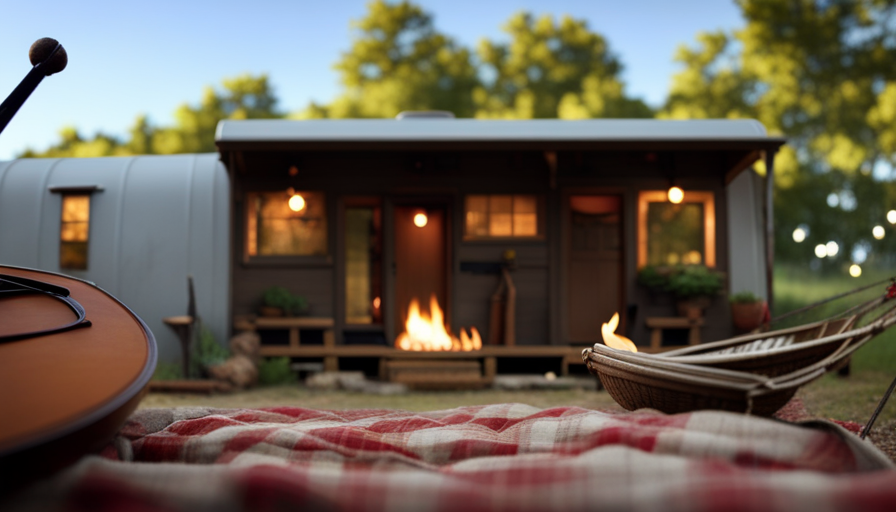
Explore the forest and breathe in the clean, pine-scented air. Sunlight filters through the leaves, casting dappled shadows on the forest floor.
As I stand in my camper, I can’t help but feel a longing for the cozy warmth of a rustic cabin. But who says you can’t bring that cabin charm with you on your camping adventures? With a few simple tricks, you can transform your humble camper into a woodland retreat.
Imagine stepping inside and being greeted by the rich aroma of cedar, the soft crackling of a fireplace, and the warm glow of cabin-inspired lighting. Picture yourself snuggled up in a plush bed, surrounded by natural elements and personal touches that make you feel right at home.
In this article, I will guide you through the steps to turn your ordinary camper into a charming cabin getaway. Get ready to make your camping experience extraordinary.
Key Takeaways
- Choose rustic decor and materials for a cabin-like atmosphere
- Create a cozy sleeping area with flannel sheets, warm blankets, and fluffy pillows
- Install wood paneling or wallpaper for a rustic cabin feel
- Incorporate natural elements for a cabin-like feel
Choose Rustic Decor and Materials
To transform your camper into a cozy cabin, start by choosing rustic decor and materials that’ll instantly transport you to a serene woodland retreat.
One of the key elements of creating a cabin-like atmosphere is selecting the right furniture. Opt for sturdy, wooden pieces with a distressed finish that exude a rustic charm. Look for a dining table made from reclaimed barnwood or a cozy rocking chair crafted from natural logs. These rustic furniture pieces’ll bring a touch of nature indoors and create a warm and inviting ambiance.
In addition to furniture, consider adding DIY cabin-themed accessories to enhance the rustic vibe. Display vintage lanterns on shelves or hang them from hooks to create a cozy glow in the evenings. Use mason jars to store utensils or as candle holders for a charming, rustic touch. Hang a wooden sign with a cabin-inspired quote on the wall to add a whimsical element.
By incorporating these rustic decor ideas, you can transform your camper into a charming cabin getaway.
Now that you’ve created a cozy and rustic living area, it’s time to move on to creating a cozy sleeping area where you can relax and unwind after a long day of outdoor adventures.
Create a Cozy Sleeping Area
Settle in for a good night’s sleep in your camper-turned-cozy sleeping sanctuary. Creating a comfortable and inviting sleeping area is essential for transforming your camper into a cabin-like retreat.
Start by choosing cozy bedding that’ll make you feel like you’re snuggled up in a cabin in the woods. Opt for soft flannel sheets, warm blankets, and fluffy pillows to create a cozy and inviting atmosphere.
Next, invest in a comfortable mattress that’ll ensure a restful night’s sleep. Look for a mattress that provides the right amount of support and comfort for your needs. Memory foam mattresses are a popular choice for their ability to contour to your body and relieve pressure points.
To enhance the cozy ambiance, consider adding a few finishing touches. Hang string lights or fairy lights above the bed to create a warm and intimate glow. Add decorative pillows and plush throws to make the space feel extra inviting.
With a cozy sleeping area in place, it’s time to move on to the next step: installing wood paneling or wallpaper to give your camper that rustic cabin feel.
Install Wood Paneling or Wallpaper
Now it’s time to bring a touch of rustic charm to your sleeping sanctuary by installing wood paneling or wallpaper. When it comes to transforming your camper into a cozy cabin, both wood paneling and wallpaper can be great options.
Wood paneling adds a natural and authentic look, while wallpaper offers a wider range of designs and patterns. Before making a decision, consider the pros and cons of each option.
Wood paneling can create a warm and inviting atmosphere, but it can also add weight to your camper. On the other hand, wallpaper is lightweight and easy to install, but it may not provide the same level of insulation as wood paneling.
If you decide to go with wood paneling, here are some tips for a successful installation. First, measure the walls carefully and cut the panels accordingly. Next, apply adhesive to the back of the panels and press them firmly onto the wall. Finally, use finishing nails to secure the panels in place.
Transition: Now that your sleeping area has a cozy cabin feel with wood paneling or wallpaper, it’s time to take it to the next level by adding a fireplace or wood-burning stove.
Add a Fireplace or Wood Burning Stove
Enhance the rustic ambiance of your sleeping sanctuary and immerse yourself in cozy cabin vibes by incorporating a fireplace or wood-burning stove into your space. The flickering flames and comforting crackle of a fire can instantly transform your camper into a warm and inviting retreat.
To start, choose a compact fireplace or wood-burning stove that fits well within the dimensions of your camper. Opt for a model that’s specifically designed for small spaces, ensuring safety and functionality.
Once you’ve selected the perfect fireplace or stove, it’s time to create a cozy seating area around it. Place a plush rug or carpet in front of the fireplace, offering a soft surface to sink your feet into and adding to the overall comfort. This will create a designated zone where you can relax and unwind after a long day of outdoor adventures.
Next, consider installing a chimney or flue to safely vent the smoke from your fireplace or stove. This is an important step to prevent any potential hazards and ensure proper air circulation. Consult with a professional to determine the best placement and installation method for your specific camper.
With a fireplace or wood-burning stove in place, you can now transition into the subsequent section about incorporating cabin-inspired lighting. Illuminate your space with warm, soft lighting to further enhance the cozy atmosphere of your camper-turned-cabin.
Incorporate Cabin-Inspired Lighting
Immerse yourself in a warm and inviting ambiance by incorporating cabin-inspired lighting into your cozy camper retreat. Cabin inspired lighting ideas can transform your camper into a rustic haven, creating a cozy ambiance that will make you feel like you’re in a charming cabin in the woods. Here are some creative lighting options that will add a touch of rustic charm to your camper.
| Lighting Idea | Description | Benefits |
|---|---|---|
| Pendant Lights | Hang pendant lights above your dining table or kitchen counter to create a focal point and provide direct lighting for meal preparation. | Adds a stylish and functional lighting solution. |
| Wall Sconces | Install wall sconces near your seating area or bed to create a warm and intimate atmosphere. | Provides soft and ambient lighting for relaxation and reading. |
| Lanterns | Hang lanterns from the ceiling or place them on shelves to create a cozy and rustic feel. | Adds a nostalgic touch and can be easily moved around for versatile lighting options. |
| String Lights | String lights along the walls or above your bed to create a magical and whimsical ambiance. | Creates a cozy and romantic atmosphere. |
By incorporating these cabin-inspired lighting ideas, you can create a cozy and inviting atmosphere in your camper. Now, let’s move on to the next section and explore how to create a functional kitchen space without compromising on style.
Create a Functional Kitchen Space
Designing a kitchen space in your camper that’s both functional and stylish can be a fun and rewarding project. When it comes to creating a functional kitchen, organization is key.
Consider using space-saving appliances and clever storage solutions to maximize the limited space available. Start by selecting appliances that are compact and efficient. Look for stoves with multiple burners and built-in ovens that can fit into a smaller space. Opt for a refrigerator with a freezer compartment to keep your food fresh and easily accessible. Additionally, consider investing in a compact dishwasher or a dish drying rack that can be easily stored when not in use.
To make the most of your kitchen space, utilize vertical storage options. Install shelves or hanging racks to store pots, pans, and utensils. Utilize magnetic strips to keep knives and other metal utensils within reach. Use stackable containers and bins to organize pantry items and maximize storage space.
By creating a functional kitchen organization system and investing in space-saving appliances, you can ensure that your camper’s kitchen is both practical and visually appealing. In the next section, we’ll explore how to maximize storage space in your camper without sacrificing style.
Maximize Storage Space
To truly optimize your camper’s storage space, envision a clever system that transforms every nook and cranny into an organized haven, enabling you to effortlessly access all your essentials on your adventurous journeys.
-
Use vertical space: Install shelves or hanging organizers on the walls to keep items off the floor and create more usable space. Utilize the area above the bed, kitchen, and seating areas to store clothing, food, and other supplies.
-
Utilize under-bed storage: Invest in storage bins or drawers that can slide under the bed. This space is perfect for storing extra bedding, clothing, or even outdoor gear like fishing rods or hiking boots.
-
Create hidden compartments: Look for furniture pieces that double as storage. For example, choose a bench with a lift-up seat or a dining table with built-in drawers. These hidden compartments are great for stashing away smaller items like utensils, maps, or toiletries.
By employing these storage solutions, you can maximize storage space in your camper and create a cozy sleeping area that feels like a cabin retreat.
Now, let’s move on to the next section and add some outdoor touches to enhance the overall ambiance of your camper.
Add Outdoor Touches
When it comes to maximizing the outdoor feel of my camper, I always make sure to add those special touches that bring the campsite to life.
One of my favorite ways to do this is by hanging string lights or lanterns around the exterior of my camper. Not only does it create a cozy and inviting atmosphere, but it also provides a warm and ambient glow during the evening hours.
Additionally, I love setting up a small outdoor seating area complete with camping chairs and a fire pit. It’s the perfect spot to gather with friends and family, roast marshmallows, and enjoy the great outdoors.
Hang string lights or lanterns around your camper
Illuminate your camper with the warm glow of string lights or lanterns, transforming it into a cozy cabin retreat. This simple camping hack instantly adds ambience and charm to your outdoor living space.
String lights can be easily hung around the exterior of your camper, creating a magical atmosphere as the sun sets. Choose warm white or soft yellow lights to mimic the cozy glow of a cabin. For a rustic touch, you can even wrap the lights around tree branches or hang them from the awning.
Lanterns are another great option, providing a soft, flickering light that adds a touch of nostalgia. Whether you opt for string lights or lanterns, these DIY decorations will make your camper feel like a home away from home.
Now, let’s set up a small outdoor seating area with camping chairs and a fire pit to complete the cabin experience.
Set up a small outdoor seating area with camping chairs and a fire pit
Transform your outdoor space into a cozy oasis with a cluster of camping chairs and a crackling fire pit. Picture this: the sun’s setting, casting a warm glow over your campsite. You and your loved ones gather around the fire pit, the smell of wood smoke filling the air.
The camping chairs are comfy and sturdy, perfect for lounging and storytelling. As the night sky darkens, you set up a portable projector for outdoor movie nights, creating a magical atmosphere under the stars.
And what’s a camping experience without delicious meals? You can whip up camping-inspired recipes over the fire pit, from s’mores to foil-wrapped dinners. Now, let’s take it a step further and incorporate natural elements into your camper to truly make it feel like a cabin retreat.
Incorporate Natural Elements
When trying to incorporate natural elements into my camper to give it a cabin-like feel, I love using potted plants or artificial greenery. Not only do they add a touch of nature, but they also bring life and vibrancy to the space.
Additionally, displaying natural materials like pinecones, rocks, or driftwood can add a rustic and earthy touch that instantly transforms the camper into a cozy cabin retreat.
The combination of these elements creates a warm and inviting atmosphere, making my camper feel like a true home away from home.
Use potted plants or artificial greenery for a touch of nature
Adding potted plants or artificial greenery will instantly bring a cozy and rustic feel to your camper, making you feel like you’re nestled in a charming cabin in the woods. Whether you prefer the low-maintenance option of artificial plants or the natural beauty of real plants, incorporating greenery into your camper can have numerous benefits. Not only do potted plants add a touch of nature, but they also improve air quality by reducing toxins and increasing oxygen levels. Additionally, plants have been shown to reduce stress and improve overall well-being. To help you choose the perfect plants for your camper, consider the following options:
| Plant | Maintenance Level | Best Location |
|---|---|---|
| Succulents | Low | Sunny windowsill |
| Ferns | Medium | Shaded area |
| Spider Plant | Low | Hanging basket |
| Pothos | Low | Anywhere |
By incorporating these potted plants or artificial greenery, you’ll create a serene environment that mimics the beauty of a cabin in the woods. Displaying natural materials like pinecones, rocks, or driftwood will further enhance the rustic feel of your camper.
Display natural materials like pinecones, rocks, or driftwood
Enhance the cozy ambiance of your camper by showcasing natural materials such as pinecones, rocks, or driftwood. This will give your space a touch of rustic charm that will transport you to a woodland oasis. Incorporating these natural elements not only adds visual interest but also connects you to the beauty of the outdoors.
To create pinecone crafts, gather a variety of pinecones and spray paint them in earthy tones like brown, gold, or green. Display them in a woven basket or arrange them on a shelf for a simple yet charming decor.
Another idea is to create a DIY rock garden using smooth stones of different sizes. Arrange them in a shallow tray or glass container and add small succulents or moss to complete the look. These natural materials will bring a sense of tranquility and earthiness to your camper, making it feel like your very own cabin retreat.
Now, let’s move on to how you can personalize your space.
Personalize Your Space
To truly make your camper feel like a cozy cabin, you can personalize your space with unique decorations and touches of your own style. Personalized accessories and creative wall art are great ways to add a personal touch to your camper and make it feel like a home away from home.
One way to personalize your space is by adding personalized accessories. You can hang up photos of your loved ones or display souvenirs from your travels. These little touches can make your camper feel more like your own personal space.
Another way to personalize your space is by getting creative with wall art. You can hang up paintings or prints that reflect your interests and hobbies. If you’re feeling crafty, you can even make your own wall art using materials like fabric, yarn, or wood.
In addition to personalized accessories and wall art, you can also add small touches of your own style throughout your camper. You can choose bedding and curtains in colors and patterns that you love. You can also add throw pillows, rugs, and blankets that are cozy and reflect your personal style.
By adding personalized accessories, creative wall art, and small touches of your own style, you can transform your camper into a cozy cabin that feels like home.
Frequently Asked Questions
Can I use modern decor and materials instead of rustic ones for my camper-turned-cabin?
Yes, you can definitely use modern decor and materials in your camper-turned-cabin! By incorporating sleek furniture, minimalist designs, and clean lines, you can achieve a modern aesthetic.
Opt for space-saving tips like multifunctional furniture, built-in storage solutions, and clever organization. Use modern finishes like stainless steel, glass, and polished wood to give your camper a contemporary feel.
Don’t be afraid to mix and match styles to create a unique and personalized space that reflects your taste and lifestyle.
How can I make my sleeping area feel more spacious in a small camper?
To make my sleeping area feel more spacious in my small camper, I found creative ways to maximize storage and create the illusion of space.
One tip I discovered was using under-bed storage bins to store extra bedding and clothing. This freed up valuable floor space and made the area feel less cluttered.
Additionally, I hung a large mirror on one wall to create the illusion of depth and make the space appear larger than it actually is.
Are there any alternatives to wood paneling or wallpaper for creating a cabin-like atmosphere?
When it comes to creating a cabin-like atmosphere in your camper without using wood paneling or wallpaper, there are a few alternatives to consider.
One option is textured paint, which can give your walls a rustic and textured look.
Another option is faux stone or brick veneer, which can add a touch of authenticity to your space.
Both of these alternatives offer creative ways to achieve the cozy cabin feel you desire.
Can I install a fireplace or wood burning stove in my camper without compromising safety?
Installing a gas fireplace in a camper can be a cozy addition, but safety precautions are crucial. According to a study by the National Fire Protection Association, heating equipment is a leading cause of home fires. To ensure safety, consult a professional to determine if your camper can support a gas fireplace. Install proper ventilation and carbon monoxide detectors. Follow manufacturer’s guidelines for installation and maintenance, and never leave the fireplace unattended. Safety first, even in a mobile cabin.
What are some creative ways to incorporate cabin-inspired lighting in a camper?
To create a cozy cabin vibe in your camper, incorporate unique lighting fixtures that capture the rustic charm. One idea is to make DIY cabin-inspired lanterns using mason jars, twine, and battery-operated tea lights. Fill the jars with dried pinecones, acorns, or small twigs for an authentic touch. Hang these lanterns from the ceiling or place them on shelves to add a warm and inviting glow to your camper’s interior.
Conclusion
As the sun sets on my transformed camper, I can’t help but feel like I’m stepping into a cozy cabin nestled deep in the woods.
With rustic decor, a snug sleeping area, and the warmth of a crackling fireplace, my camper has become a haven of tranquility.
The wood paneling and cabin-inspired lighting add an authentic touch, while the clever storage solutions make the most of every inch.
With outdoor touches and natural elements, my camper truly feels like a slice of paradise.
So why wait? Let your camper embrace its inner cabin and embark on a journey filled with comfort and charm.
Jason is the author of Laienhaft, a blog for all things outdoor and camping. If you’re looking for the best tent to take on your next camping trip, or need some advice on how to get started with recreational camping, Jason has you covered. He’s also an expert on survival skills – if you’re ever lost in the wilderness, he’s the guy you want to find!
Beginners Guides
How To Dispose Of Old Camper
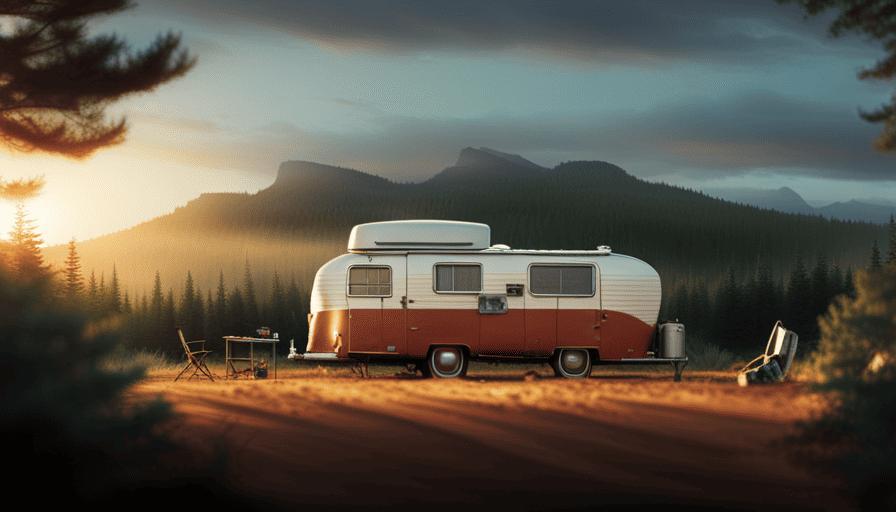
Did you know that there are over 11 million recreational vehicles (RVs) on the roads in the United States? With such a large number, many people eventually need to dispose of their old campers. Whether you’ve upgraded to a newer model or simply no longer need your camper, it’s important to know the proper way to dispose of it.
In this article, I will guide you through the process of disposing of your old camper in a thorough and knowledgeable manner. From assessing its condition to exploring recycling options, trade-ins, and local removal services, I will provide you with all the information you need to make an informed decision.
So, let’s dive in and ensure that your old camper finds a new home in the most responsible and efficient way possible.
Key Takeaways
- Assess the condition of the camper before deciding how to dispose of it, considering factors such as water damage, structural issues, and the condition of appliances, plumbing, and electrical systems.
- Research potential buyers or organizations for selling or donating the camper, and clean and declutter it before listing it for sale or donation.
- Explore recycling options such as local recycling centers, scrap yards, RV salvage yards, online platforms, or donation to non-profit groups, as recycling old campers is an environmentally friendly option that supports a sustainable future.
- Consider trade-in options by contacting dealerships or RV manufacturers, inquiring about trade-in programs, and negotiating the trade-in value based on the camper’s condition and features.
Assess the condition of your camper
Before you can decide how to dispose of your old camper, you should assess its condition and determine if it can be salvaged or repurposed. Assessing the value of your camper is an important step in this process.
Take a close look at the overall condition of the camper, both inside and out. Check for any signs of water damage, such as soft spots on the floor or walls, as well as any structural issues. Evaluate the condition of the appliances, plumbing, and electrical systems to see if they’re in working order.
Next, consider the repairs that the camper may need. Are there any major issues that would require extensive and costly repairs? Take into account the cost of these repairs compared to the value of the camper. If the repairs outweigh the value, it may not be worth salvaging.
Once you have assessed the condition and evaluated the repairs needed, you can determine if the camper can be sold or donated. If the camper is in good condition and only needs minor repairs, it may be worth selling to someone who’s willing to fix it up. On the other hand, if the camper is beyond repair or not worth salvaging, donating it to a charitable organization or recycling it may be the best option.
Determine if it can be sold or donated
When determining if my old camper can be sold or donated, I research potential buyers or organizations that may be interested in acquiring it. I take the time to thoroughly investigate different options and gather information on local camper dealerships, online marketplaces, and charitable organizations that accept camper donations.
Once I’ve identified potential buyers or organizations, I prepare the camper for sale or donation by thoroughly cleaning and organizing it, ensuring that all systems are functioning properly, and gathering any necessary paperwork or documentation.
Research potential buyers or organizations
To find a potential buyer or organization for your old camper, start by researching online platforms like Craigslist or Facebook Marketplace. These platforms have a staggering 80% success rate for people selling their used RVs and finding interested buyers. You can post detailed descriptions, include multiple photos, and even negotiate the price directly with potential buyers.
Additionally, you can explore specialized websites that cater specifically to RV sales, such as RV Trader or RVT.com. These websites attract a targeted audience of RV enthusiasts who are more likely to be interested in purchasing your camper.
Another option is to reach out to local RV dealerships or consignment shops. They may be interested in selling your camper on your behalf.
By exploring these potential buyers and organizations, you can increase your chances of finding a suitable home for your old camper.
Now, let’s move on to preparing the camper for sale or donation.
Prepare the camper for sale or donation
Now, let’s get the camper ready for selling or donating to its new owner. Before listing it for sale or exploring donation options, it’s important to prepare the camper to maximize its value. Here are a few steps to consider:
-
Clean and declutter: Give the camper a thorough cleaning, inside and out. Remove personal belongings and any unnecessary items to make it more attractive to potential buyers or organizations.
-
Make necessary repairs: Fix any minor issues or damages to ensure the camper is in good working condition. Replace any broken appliances or fixtures to enhance its appeal.
-
Advertise effectively: Take high-quality photos of the camper and create a compelling listing. Highlight its features and include relevant details to attract potential buyers. Utilize online marketplaces, social media, and local classifieds to reach a wider audience.
-
Set a reasonable price: Research similar campers in the market to determine a fair asking price. Consider factors like age, condition, and current demand.
With the camper ready for sale or donation, it’s time to consider recycling options for any remaining materials.
Consider recycling options
If you’re looking to make a positive impact on the environment, recycling your old camper is a great option. Not only is it an environmentally friendly disposal method, but it also allows you to contribute to the circular economy by giving new life to the materials in your camper. Recycling options for old campers vary depending on your location, but here are some common options to consider:
| Recycling Option | Description | Benefits |
|---|---|---|
| Local Recycling Centers | Many cities and towns have recycling centers | Reduces landfill waste and promotes recycling |
| Scrap Yards | Scrap yards can dismantle and recycle campers | Salvages valuable materials for reuse |
| RV Salvage Yards | Specialized yards that recycle RV parts | Allows for reuse of specific RV components |
| Online Platforms | Websites like Craigslist or eBay | Gives your camper a chance for a second life |
| Donation to Non-Profit Groups | Organizations that accept campers as donations | Provides resources for those in need |
By recycling your old camper, you are helping to minimize waste and support a more sustainable future. Once you have considered recycling options, the next step is to explore trade-in options for your old camper.
Explore trade-in options
When exploring trade-in options for my old camper, I would first reach out to various dealerships or RV manufacturers to inquire about their trade-in programs. This way, I can get a better understanding of what options are available to me and what kind of value I can expect to receive.
Once I have gathered all the necessary information, I can then negotiate the trade-in value based on the condition and features of my camper. By being thorough and knowledgeable about the trade-in process, I can ensure that I’m getting the best possible value for my old camper.
Contact dealerships or RV manufacturers
First things first, you should reach out to local dealerships or RV manufacturers to explore your options for disposing of your old camper. Many dealerships have RV dealer partnerships that allow them to take in old campers for trade-in or sale. They may have specific programs in place to help you get rid of your old camper responsibly.
Additionally, some RV manufacturers have recycling programs where they accept old campers and recycle their parts or materials. By contacting dealerships or RV manufacturers, you can find out if they have any trade-in or recycling options available for your old camper.
Once you have explored these possibilities, you can then negotiate the trade-in value for your camper. This will ensure that you get the best deal possible when it comes to disposing of your old camper and potentially purchasing a new one.
Negotiate the trade-in value
To get the best deal when trading in your camper, negotiate the value with dealerships or manufacturers. Trade-in negotiations can be a crucial step in determining the value of your old camper. Here are some key points to consider during the negotiation process:
-
Research the market value of your camper beforehand, so you have a baseline for negotiations.
-
Highlight any unique features or recent upgrades that may increase its value.
-
Be prepared to negotiate and counteroffer if the initial trade-in value is lower than your expectations.
-
Consider getting quotes from multiple dealerships or manufacturers to compare offers and leverage them against each other.
By engaging in trade-in negotiations, you can ensure that you receive a fair value for your old camper. Once you have completed this step, you can move on to the next section about advertising for free or low-cost disposal, expanding your options for finding a new owner for your camper.
Advertise for free or low-cost disposal
Consider posting an ad online or in your local community to find someone in need of a camper, as there are approximately 40 million online classified ads posted each month. This can be an effective way to advertise your camper for free or at a low cost. In the ad, be sure to mention that you’re looking for someone to take the camper off your hands for free or at a minimal cost. Highlight any unique features or benefits of the camper to attract potential buyers.
When advertising for free or low-cost disposal, it’s important to provide clear and detailed information about the camper. Include the make, model, year, and any additional features or amenities. Take quality photos from different angles to give potential buyers a good idea of what they’re getting. Be honest about the condition of the camper and if there are any repairs that need to be made.
In addition to online ads, consider reaching out to local community groups or organizations that may be interested in your camper. You can post on social media platforms, community bulletin boards, or even ask friends and family if they know anyone who may be interested. By utilizing these free or low-cost disposal options, you increase the chances of finding someone who’ll take your old camper off your hands.
Transitioning into the next section, another option to consider is seeking out salvage yards or scrap metal buyers. These entities may be interested in purchasing your camper for its parts or for the scrap metal value.
Seek out salvage yards or scrap metal buyers
After considering the option to advertise for free or low-cost disposal of your old camper, it might be worth exploring salvage yards or scrap metal buyers as an alternative solution. This route involves selling your camper to a salvage yard or scrap metal buyer who will dismantle it and recycle the materials.
One advantage of this approach is that salvage yards and scrap metal buyers are often willing to pay for old campers, even if they’re no longer in working condition. This means you can potentially recoup some of the costs associated with disposing of your camper.
Additionally, by choosing this route, you can ensure that the materials from your old camper are being recycled and repurposed rather than ending up in a landfill.
When considering salvage yards or scrap metal buyers, it’s important to do some research to find reputable businesses in your area. Look for companies that specialize in scrap metal recycling and have experience handling campers or RVs. You can contact them to inquire about their purchasing process and any specific requirements they may have.
Exploring salvage yards or scrap metal buyers can be a viable option for disposing of your old camper while also potentially receiving some compensation. However, if this option doesn’t suit your needs, the next step is to contact local RV or camper removal services.
Contact local RV or camper removal services
If salvage yards or scrap metal buyers aren’t the right fit for you, reach out to local RV or camper removal services for assistance with getting rid of your unwanted vehicle. RV removal services specialize in removing and disposing of old campers, ensuring that the process is seamless and hassle-free for you. They have the necessary equipment and expertise to safely and efficiently remove your camper from your property.
When it comes to disposing of your old camper, you may be wondering whether to sell or donate it. Selling your camper can help you recoup some of the costs, especially if it’s still in good condition. You can list it online or advertise locally to find potential buyers. On the other hand, donating your camper can be a great option if you’re looking to do some good and help others. There are organizations and charities that accept camper donations and use them for various purposes, such as providing shelter for the homeless or supporting disaster relief efforts.
Consider repurposing or upcycling options for your old camper, as there are many creative ways to give it a new life. Some people transform old campers into guest houses, mobile offices, or even tiny homes. By repurposing or upcycling your camper, you not only reduce waste but also create something unique and functional.
Moving on to the next section about ‘consider repurposing or upcycling options’, there are several exciting possibilities to explore.
Consider repurposing or upcycling options
When it comes to disposing of an old camper, one option to consider is repurposing or upcycling. There are plenty of DIY projects and creative ideas out there that can give new life to your old camper.
From turning it into a backyard office or guest room to transforming it into a mobile food truck or tiny home, the possibilities are endless.
Additionally, you can also try reaching out to local organizations or individuals who may be interested in repurposing your camper for their own use.
Explore DIY projects or creative ideas for repurposing
Get inspired and discover all the amazing DIY projects and creative ideas you can explore to repurpose your old camper!
Here are some exciting ways to repurpose furniture and create unique DIY home decor pieces:
-
Convert the camper into a cozy reading nook by adding a comfortable seating area with cushions and shelves for books.
-
Transform the camper into a mobile mini bar, complete with a countertop, shelves for bottles, and space for glassware.
-
Repurpose the camper into a backyard playhouse for kids, with a small slide, swings, and a mini picnic table.
-
Turn the camper into a stylish guest room by adding a comfortable bed, curtains for privacy, and storage space for clothes.
By repurposing your old camper in these creative ways, you can give it a new lease on life while adding unique and functional pieces to your home. Once you’ve explored these DIY projects, it’s time to find local organizations or individuals interested in repurposing to continue the journey of giving new life to your old camper.
Find local organizations or individuals interested in repurposing
Contrary to popular belief, there are countless local organizations and individuals who are eager to breathe new life into your beloved camper by repurposing it. Collaborative initiatives between these organizations and individuals have been formed to promote sustainability and reduce waste. By repurposing old campers, not only are you giving them a second chance, but you are also contributing to the environmental benefits of recycling and reducing landfill waste.
To give you an idea of the possibilities, here is a table showcasing some creative repurposing ideas for old campers:
| Repurposing Idea | Description | Potential Use |
|---|---|---|
| Mobile Workspaces | Transform your old camper into a mobile workshop | Artists, craftsmen, or entrepreneurs |
| Tiny Homes | Convert the camper into a cozy living space | Minimalists or those seeking simplicity |
| Mobile Stores | Create a mobile boutique or food truck | Small business owners or entrepreneurs |
With these collaborative initiatives and the environmental benefits in mind, it’s clear that repurposing your old camper can be a win-win situation. However, before you can repurpose it, you’ll need to properly clean and prepare the camper for disposal.
Properly clean and prepare the camper for disposal
Before disposing of my old camper, I made sure to remove all personal belongings and thoroughly clean the interior. This included emptying out cabinets and drawers, vacuuming and wiping down surfaces, and removing any stains or odors.
Additionally, I took the necessary steps to dispose of any waste or hazardous materials properly, such as emptying and cleaning the holding tanks and safely disposing of any chemicals or fuel.
By taking these precautions, I ensured that the camper was in its best possible condition for disposal and minimized any potential harm to the environment.
Remove personal belongings and clean the interior
First, take a moment to envision yourself carefully sorting through your personal belongings, gently removing each item from its place in the well-loved camper. As you go through the camper, think about potential repurposing ideas for items that hold sentimental value or could be useful in a different way.
For example, old curtains could be turned into pillows or reused for a DIY project. Once all personal items have been removed, it’s time to deep clean the interior. Use appropriate cleaning techniques, such as vacuuming the upholstery, wiping down surfaces with disinfectant, and cleaning the windows with glass cleaner. Pay special attention to any stains or odors, using appropriate products to remove them.
With the interior clean and belongings sorted, you are now ready to dispose of any waste or hazardous materials in an environmentally responsible manner. Remember to follow local regulations and dispose of these materials safely.
Transitioning into the subsequent section, it’s important to address the proper disposal of waste and hazardous materials without causing harm to the environment.
Dispose of any waste or hazardous materials
Now it’s time to get rid of any waste or hazardous materials in a responsible manner, ensuring the safety of the environment. When disposing of waste from your old camper, it’s important to follow proper waste management procedures to minimize the environmental impact.
Here are two sub-lists to guide you through the process:
-
General waste disposal:
- Empty all trash cans and remove any loose items.
- Separate recyclable items such as plastic bottles, aluminum cans, and cardboard boxes for recycling.
-
Hazardous materials disposal:
- Identify and remove any hazardous materials, such as batteries, propane tanks, and cleaning chemicals.
- Contact your local waste management facility for instructions on how to properly dispose of these items.
Properly disposing of waste and hazardous materials is crucial to protect the environment from pollution and harm. Once you’ve completed this step, you can move on to documenting the disposal process in the subsequent section about ‘documenting the disposal process’.
Document the disposal process
When it comes to disposing of an old camper, it’s crucial to document the disposal process. I keep records of any transactions or agreements made during the disposal, ensuring that all parties involved are accounted for.
Additionally, proper documentation for the legal disposal or transfer of ownership is essential to avoid any potential issues down the line. By meticulously documenting the disposal process, I can ensure a smooth and hassle-free transition for both myself and the new owner.
Keep records of any transactions or agreements
To properly bid farewell to your beloved camper, make sure to hold on tightly to any records of transactions or agreements as if they’re the compass guiding you through uncharted waters.
Keeping records of any transactions or agreements is crucial when disposing of an old camper. It not only helps you stay organized but also provides a legal trail of the camper’s ownership transfer. To ensure proper documentation for the legal disposal or transfer of ownership of your old camper, consider the following:
- Keep a copy of the bill of sale or any purchase agreements.
- Maintain a record of any repairs or modifications made to the camper.
- Save receipts for any parts or accessories purchased.
- Document any communication or agreements with potential buyers or disposal services.
By diligently keeping these records, you can navigate the process smoothly and ensure a seamless transfer of ownership or disposal of your old camper.
Now, let’s delve into the next section on how to ensure proper documentation for legal disposal or transfer of ownership.
Ensure proper documentation for legal disposal or transfer of ownership
Make sure you have all the necessary paperwork in order to smoothly transfer ownership or legally dispose of your cherished camper. When it comes to the legal disposal or transfer of ownership of your old camper, it’s crucial to ensure proper documentation.
First and foremost, familiarize yourself with the legal requirements in your jurisdiction regarding the disposal or transfer of ownership of vehicles. This may include obtaining a title transfer form, bill of sale, or other relevant documents. Failure to comply with these requirements can result in potential legal issues down the line.
Additionally, if you’re transferring ownership to another party, it’s important to draft a written agreement that clearly outlines the terms and conditions of the transfer. This will help protect both parties involved and prevent any misunderstandings or disputes in the future.
By discussing the legal requirements and potential legal issues, you can ensure a smooth and hassle-free disposal or transfer of ownership process.
Frequently Asked Questions
Can I donate my old camper to a charity or non-profit organization?
Absolutely! Donating your old camper to a charity or non-profit organization is a fantastic option. Not only will you be helping a worthy cause, but you may also be eligible for valuable tax deductions.
Many organizations gladly accept camper donations and use them for various purposes, such as providing shelter for the homeless or offering recreational programs for underprivileged individuals.
It’s a win-win situation that allows you to make a positive impact while enjoying potential financial benefits.
Are there any regulations or restrictions on recycling camper materials?
There are indeed regulations and restrictions in place when it comes to recycling camper materials. These regulations aim to minimize the environmental impact caused by the disposal of old campers.
Materials such as batteries, propane tanks, and hazardous chemicals must be properly disposed of according to local regulations. Additionally, certain materials like fiberglass and aluminum can be recycled, but it’s important to check with local recycling facilities to ensure they accept these materials.
Properly recycling camper materials helps protect the environment and ensures compliance with regulations.
How do I find out if there are any trade-in options available for my old camper?
If you’re looking for trade-in options or selling options for your old camper, there are a few steps you can take to find out.
Start by researching local dealerships or RV retailers that offer trade-in services. Contact them directly to inquire about their trade-in policies and if they accept campers.
Additionally, you can explore online platforms or classified ads specifically for RV sales, where you can list your camper for potential buyers.
Remember to gather all relevant information about your camper to ensure a smooth transaction.
Are there any specific steps I need to take to properly clean and prepare my camper for disposal?
To ensure proper disposal of my old camper, it’s essential to follow a thorough cleaning process and adhere to proper disposal methods.
Firstly, I’d start by removing all personal belongings and cleaning out any debris or trash.
Next, I’d thoroughly clean the interior, including the floors, walls, and appliances, using appropriate cleaning products.
Lastly, I’d clean the exterior, paying special attention to any stains or rust.
By following these steps, I can ensure that my camper is ready for proper disposal.
What are some examples of repurposing or upcycling options for old campers?
Upcycling old campers can be like giving them a second chance at life. There are countless repurposing ideas to transform them into unique and functional spaces.
Some popular options include turning them into guest houses, mobile offices, or even tiny homes. With a little creativity and DIY skills, you can create a cozy and stylish living space while reducing waste.
The possibilities are endless when it comes to repurposing old campers!
Conclusion
After exploring all the options for disposing of my old camper, I’ve come to a surprising conclusion. It turns out that my camper can be repurposed into something completely new and unique with a little bit of love and creativity. The possibilities are endless – a tiny home, a mobile office, or even a backyard guest house. It’s incredible to think that what was once considered junk can now have a second life. So before you say goodbye to your old camper, take a moment to think about the endless possibilities that await.
Jason is the author of Laienhaft, a blog for all things outdoor and camping. If you’re looking for the best tent to take on your next camping trip, or need some advice on how to get started with recreational camping, Jason has you covered. He’s also an expert on survival skills – if you’re ever lost in the wilderness, he’s the guy you want to find!
-

 Beginners Guides1 month ago
Beginners Guides1 month agoLaienhaft Acquires aircooled-tv.com Domain to Add Focus on Aircooled Campervans
-

 Backpacker1 month ago
Backpacker1 month agoLaienhaft Acquires Infos-Campings.Com Domain – Our Joined Way Forward to Experience Outdoor, Camping, and Making Friends and Live the Experience
-
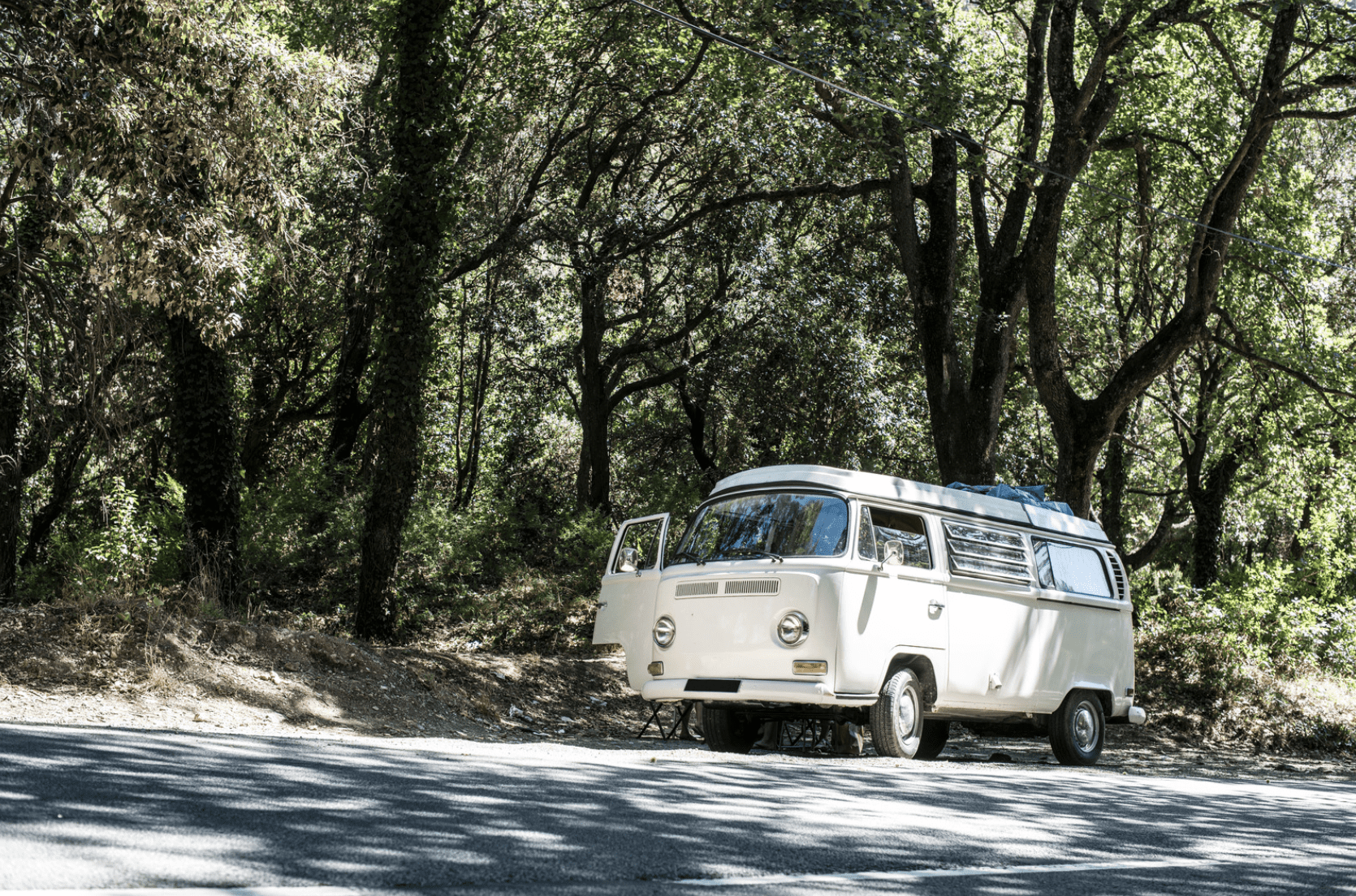
 Beginners Guides1 month ago
Beginners Guides1 month agoThe Guide to the Best Camping License Plate Ideas for Cars and RVs
-
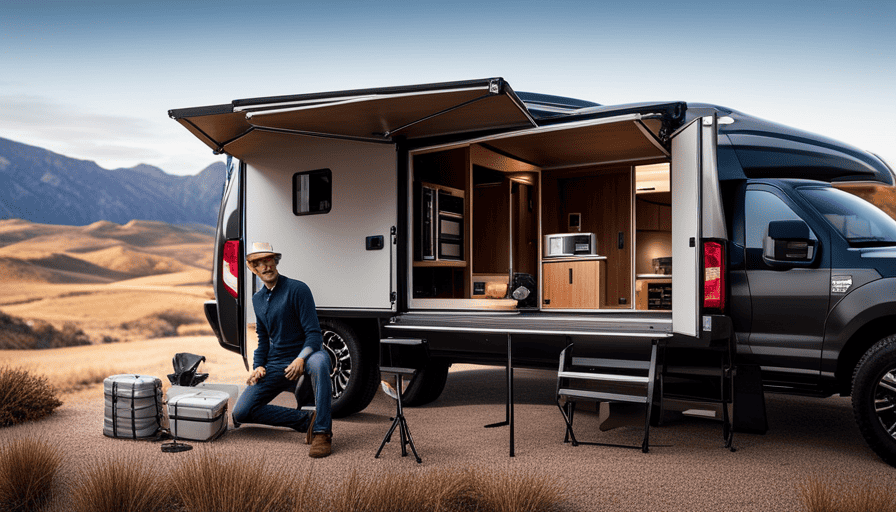
 Beginners Guides2 months ago
Beginners Guides2 months agoHow To Build A Slide In Truck Camper
-
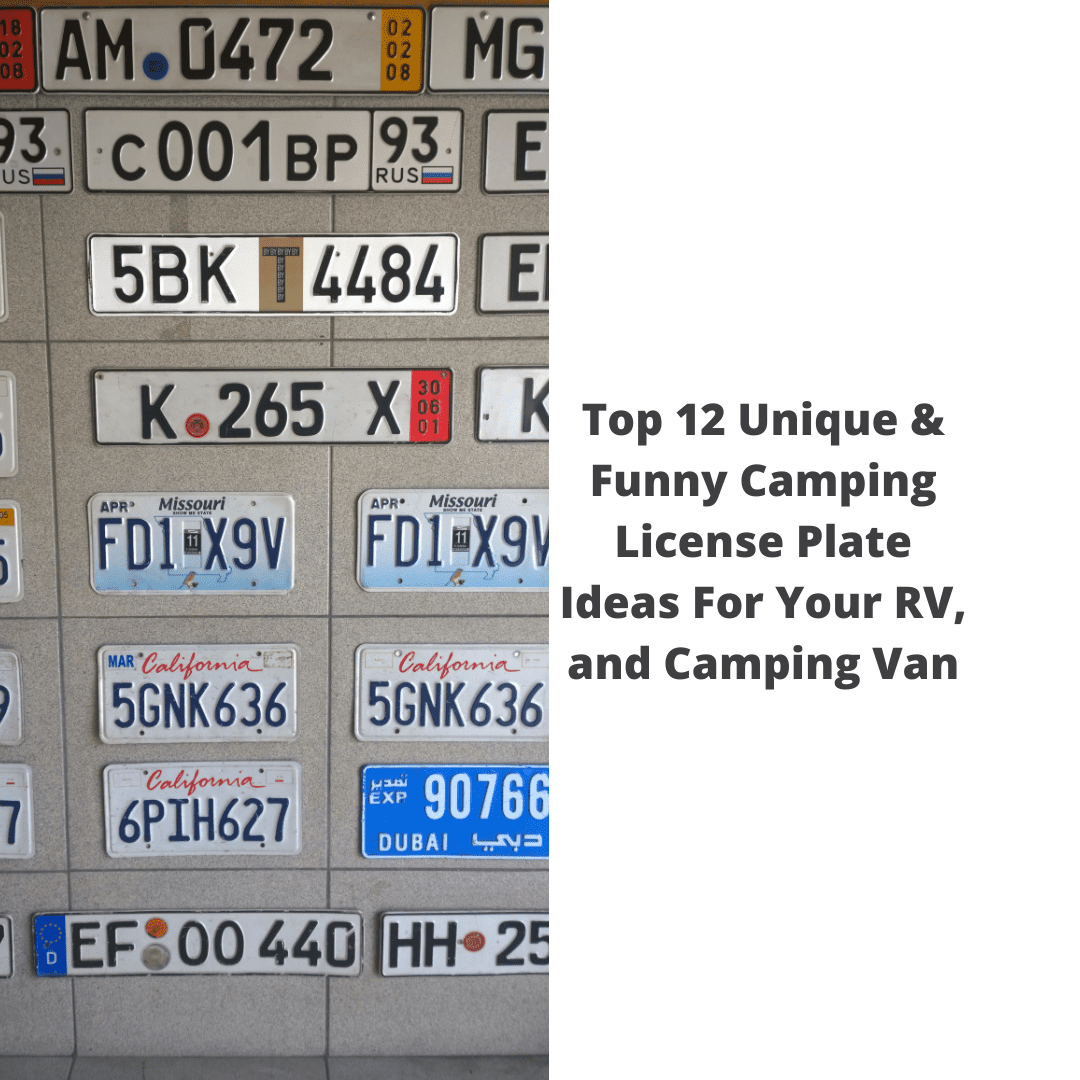
 License Plate1 month ago
License Plate1 month agoTop 12 Unique & Funny Camping License Plate Ideas For Your RV, and Camping Van
-

 Beginners Guides1 week ago
Beginners Guides1 week agoHow To Install A Camper Shell
-

 Beginners Guides2 weeks ago
Beginners Guides2 weeks agoHow To Lubricate Pop Up Camper Lift System
-

 Beginners Guides1 month ago
Beginners Guides1 month agoWhy Does My Throat Hurt After Camping? The Most Common Reasons and How to Fix Them





